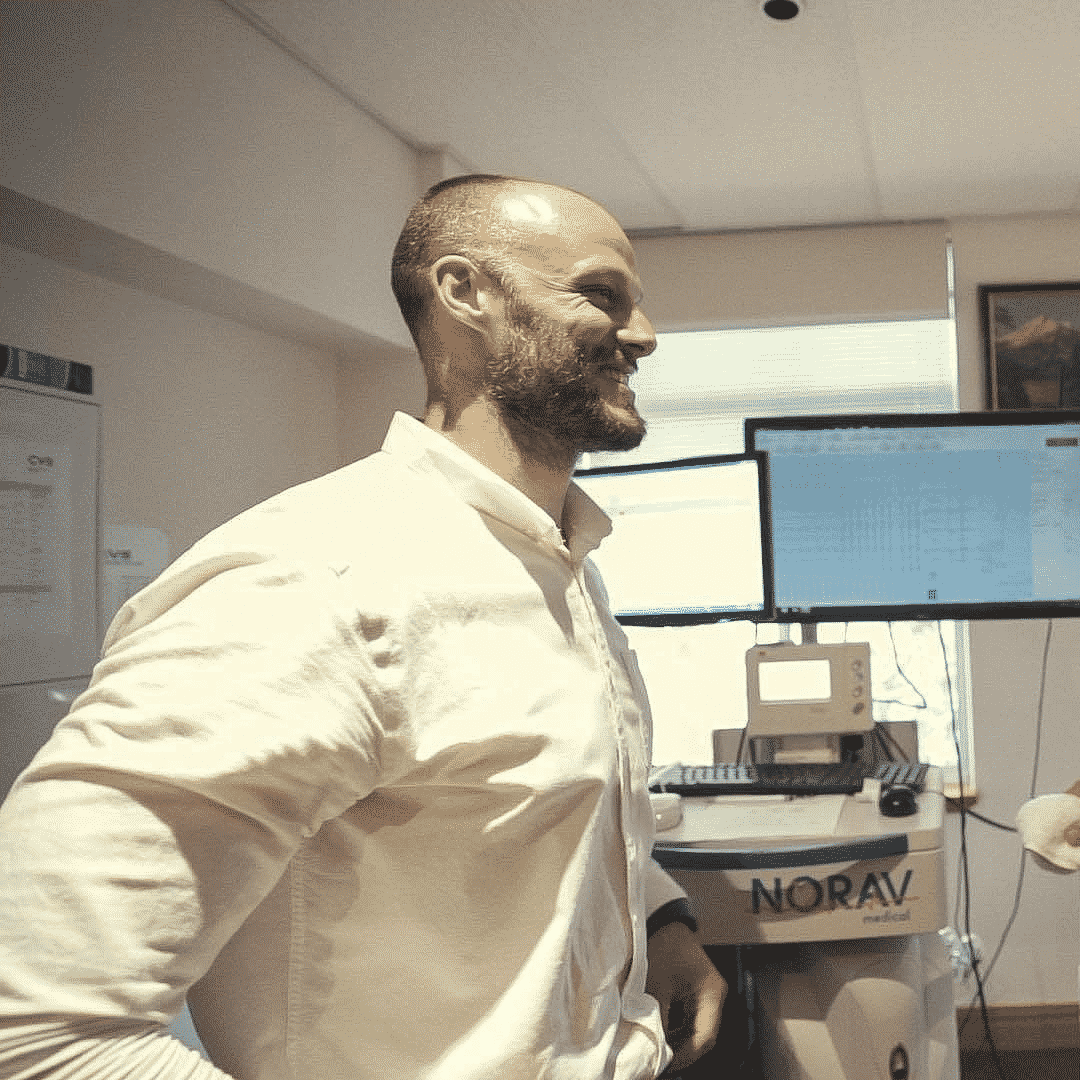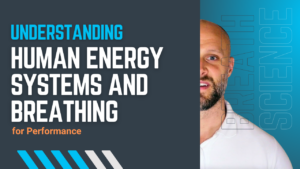A Discussion with Professor George Dallam On Nasal vs Mouth Breathing During Exercise

Introduction
Last month the HHP foundation posted a research article titled
As a scientist, I felt obliged to create a short critical analysis of the paper and where I believe there could be some discrepancies in the data or methodology that were worth discussion. Therefore, I decided to reach out to Professor George Dallam to open up a dialogue surrounding my critique and have an academic discussion regarding his paper and nasal vs oral breathing in Athletes.
George was very open to a discussion. Given our differences in the background (Clinical vs Academic) yet, similar interests make for a good back and forth with some interesting hypothesis and ideas of how oral and nasal breathing may impact health and performance.
With his permission, I have put together this blog for your viewing to read into some ground-breaking ideas that may pave the way for research and performance in future athletes.
These data are not new to some of the pioneering coaches in the performance space. For example, Brian Mackenzie at Shift Adapt and Patrick McKeown at Oxygen Advantage have been promoting nasal breathing as a more efficient way to breathe for many years. However, exercise physiologists have rarely visited the idea of nasal adaption and thus, the research is scarce. Anyway, here are some insights for you to enjoy, any questions you ponder, let me know in the comments or on my Instagram, and I will get back to you as soon as I can.
Dr Dallam is a professor in the Department of Exercise Science, Health Promotion and Recreation at Colorado State University-Pueblo. He has taught a wide variety of classes in exercise physiology, research and statistics, behaviour facilitation, sport psychology, kinesiology, biomechanics, management, exercise assessment and prescription, swimming, running and triathlon and is currently chair of the CSU-Pueblo Institutional Review Board and Faculty Compensation Committee. He is also the former National Teams Coach for USA Triathlon and has worked for many years with elite U.S. triathletes as a coach, advisor and consultant. Athletes coached by Dr Dallam have included National Elite and Age Group Champions, Olympians, Pan American Games Medalists, World Age Group Champion,s and the top-ranked male triathlete in the world in 2005-2006, Hunter Kemper.
Dr Dallam has been involved in numerous research studies and the publication of their results examining various aspects of triathlon performance and training and diabetes risk factor modification. His current research interests focus on the capability of athletes adapted to nasal only breathing to produce peak workloads similar to that made when breathing orally and the effect of functional movement interventions on running performance.
Conversation
Hello Dr Dallam,
I have been reading through your paper ‘Effect of nasal versus oral breathing on VO2 max…’
It’s a fascinating study; I have been following the Nasal vs Oral argument for a while online, in books, and in podcasts, so I have been waiting to see some solid literature, so I applaud you for that.
I do have some questions, though, and would love to open a discussion.
- How can we distinguish that those who are nasally trained are not just hyperventilating during oral breathing?
> GD
Interesting question: in my experience, all athletes begin to hyperventilate as they pass the second lactate (anaerobic) threshold, which is, of course, is the basis for determining ventilatory points.
There is some degree of disproportionately increased Ventilation in the nasal breathing trial, but it is far less pronounced. I may, at some point, do a paper on the respiratory mechanics across the GXT but have not had time so far.
Of course, by not getting pre-tests before adaptation, we cannot rule out the idea that oral breathing patterns were altered in some negative way as a result of adapting to nasal breathing – we sorely need a basic trial starting with non-adapted people and comparison testing of the type we did in this study before and after adaptation has occurred in control and treatment. I am trying to start a case study with an elite athlete following the entire nasal transformation course – not yet started as fi. Someone with the ability who is also willing is challenging.
>> MM
Perhaps through the power of social media, we can source a willing elite athlete near Colorado State University? Any of you readers know anyone, please reach out.
>> GD
I believe that the slower respiratory rate during nasal breathing probably entrains a similar outcome even when breathing orally following adaptation to higher end-tidal CO2 and loss of air hunger. We felt like respiratory rate were lower than typical for our subjects in the oral conditions. In addition, this recent paper whereby they tested a nasal breathing restriction device, but in so doing had the cyclists train to breathe nasally in the treatment group (I confirmed with the researcher) resulted in similar improvements in ventilatory efficiency in the treatment group even though they tested pre and post limiting to oral breathing conventionally. Paper Link – https://www.mdpi.com/1660-4601/18/2/777
- Exciting paper that one, thank you. I have an interest in inspiratory muscle training, having done some research on that back in 2012. What prompted you to reach out to the author? Was that for more evidence to support your hypothesis? It’s challenging to compare the impact on the results in this paper, given they performed nasal training and used nasal IMT devices yet then tested via standard procedures.
> GD
I was intrigued by the idea that the study examined a nasal breathing restrictive device in elite athletes who would be breathing orally normally most of the time in training. This would be assumed to have little effect if breathing orally, as most evidence suggests the nasal contribution to exercise is negligible once oral breathing ensues. However, they were not clear about this, so I emailed to confirm. They have also published some work showing outstanding improvements in COPD patients using the same device – it occurs to me that this is mostly about changing breathing pattern from oral to nasal, although the restrictive device probably augments that effect – as is the case with oral breathing restrictive devices.
- A VE/VCO2 > 32 at ventilatory threshold 2 seems to be high for recreational runners at 34 years and 23 years respectively for male and females; what are your thoughts on this?
> GD
I can’t speak to that as it is not typical of much interest in testing athletes, which is my background – possibly some peculiarity of our Medgraphics system, which has some strong detractors as to accuracy. Also, note the mean ages are not particularly representative as the ages of subjects varied widely.
>>MM
We use VE/VCO2 & VE/VO2 with End-tidal gases to look at ventilatory sufficiency in clinical practice. In patients, a high VE/CO2 at VT2 can indicate hyperventilation or poor gas exchange with typical values between 25-30. Generally, the younger the individual, the lower these v. That’s what made me question it. But looking at your data, the 85% steady-state trail is well past VT2, and therefore this value may rise as a result of ventilatory compensation. There might be something of interest in those values, given it is significantly lower in the nasal breathing trial. Comparing that with a small but significant reduction in VO2 and no change in VCO2 may suggest better ventilatory/ perfusion matching. Vd/Vt values may help view changes in anatomical and physiological dead space between the two trials, with that comparison made – it may hint at evidence towards cardiac/ pulmonary blood flow changes and possible greater diffusion due to slower blood flow and greater transit time in the lung as well as reduced Ventilation.
>> GD
So I tend to rest my hat regarding the improved diffusion during nasal breathing on the longer diffusion time and likely greater pulmonary air mixing – by this, I mean even though the tidal volumes are the same in both conditions, the higher inspiratory resistance during nasal breathing possible results in better recruitment of the diaphragm and deeper penetration of the inspired air into the lung, potentially exposing a greater number of alveoli to gas exchange and increasing the total surface for diffusion as a result. The greater nitric oxide release potentially augments this further. But, of course, that is entirely speculative. It is hard to imagine that blood flow changes are a big part of the picture with similar heart rates.
>> MM
The higher the inspiratory resistance, the more negative pressure changes occur in the pleura, which may, in turn, increase venous return through changes in the pressure gradient of the right atria. There was no significant difference in heart rate, but I’m not sure whether that would also mean no difference in oxygen pulse (VO2/HR), which could be a valuable measure?
>> GD
As I suggested above – this concept is a struggle for pulmonary specialists because they compare end-tidal O2 and CO2 across the same breathing route with variations based on the presence of disease. Therefore, I will have to check the VO2/HR.
- Would you be willing to share the Wasserman graphs of a couple of subjects for further analysis?
> GD
I’m not sure exactly what you mean – I assume you are referring to the ventilatory thresholds? We did not address that as it was not part of our basic set of research questions. I still have the 30-second values across all stages for all the respiratory variables.
>> MM
I use a similar Medgraphic Ultima system, and it’s not without its challenges. For example, during the individual GXT test, you can view the nine-plot panel called Wassermann 9 plots, a graphical representation of the test, making it easier to interpret hyperventilation by matching up VE, VE/VCO2 and PETCO2 throughout the maximal incremental test.
>> GD
I do have all that data – I assume your working definition of hyperventilation is when VE/VCO2 begins to increase disproportionately or at all? Interestingly, clinicians tend to view increased PET CO2 as a bad thing. Yet, the higher PETCO2 during nasal breathing ultimately becomes a non-issue once the athlete adapts and air hunger is no longer present.
>>MM
No, my interpretation of hyperventilation would be higher VE/VO2 with lowering PETCO2, suggesting excessive CO2 blow off and a shift of movement towards hypocapnia. But I can see in your data that with a higher PETCO2, lower R.R. and similar exercise capacity/performance that it points towards CO2 tolerance adaptation, which agrees with the likes of Patrick McKeown (Oxygen Advantage) and Brian Mackenzie (Shift Adapt), who have been coaching nasal breathing for around 5-8 years now.
>> GD
I have a working hypothesis that the relatively more remarkable hyperventilation seen during oral breathing in exercise might be a contributing factor in reduced coronary blood flow – via both a lesser release of nitric oxide (assuming it gets that far downstream from the lung) and generally lower blood CO2 resulting in less vasodilation (maybe even some vasoconstriction) in the coronary arteries. Of course, at rest, significant hyperventilation, as during a panic attack, associates with occasional coronary spasm and fatal MI in some susceptible individuals. During exercise, similar hyperventilation produced by breathing orally might be the basis for the increased myocardial scarring seen in long term endurance athletes (literally all of whom breathe orally when training/racing).
>> MM
I think understanding Nitric Oxide better is also a step we need to take. Now clinicians only see it as a pro-inflammatory marker related to airway disease such as Asthma, but I think there’s more to it. However, I have not investigated the literature at all myself. This might be easy to examine in an adapted nasal breather by looking for differences in coronary blood flow during exercise in both breathing conditions.
Additions
>> GD
You have piqued my interest in going back to my data to look at the possibility of hyperventilation differences between nasal and oral route (as you have defined – relative increase in Ventilation with falling end-tidal CO2 – suggesting that further VE increase is not meeting the need to remove CO2). If you have a citation specific to that definition to start from, please provide it. If I do get to that and you want to author collaboratively, that would be fine as well.
>>MM
It may be the lens that I am viewing your data through, i.e. clinical based and therefore, I am looking for ventilatory inadequacy.
Those who are nasally trained then offload CO2 faster due to less resistance to oral breathing. As a result, you would see more quickly rises in VCO2, PETCO2 may increase with that, but then PETCO2 would eventually begin post-VT2 and certainly when reaching VT3.
>>GD
I think that occurs in everyone on some level simply because of the higher respiratory rates of oral breathing during exercise – CO2 removal is augmented due to the higher diffusion rates of CO2 (having to do with binding affinity to haemoglobin), while O2 diffusion is compromised due to lower diffusion rates of O2)
>> MM
Here’s a reference for my interpretation
https://erj.ersjournals.com/content/erj/29/1/185.full.pdf
Page 188, paragraph under abnormal ventilatory control
In primary hyperventilation, there is marked hyperventilation at rest with metabolic compensation being complete. The hyperventilation is maintained during exercise, i.e., abnormally large VE increases and an elevated VE– VCO2 slope [33–35]. However, as an increased VE–VCO2 slope can reflect an increased VD/VT as well as a reduced PCO2 setpoint, simultaneous Pa, CO2 monitoring is needed to rule out the former. Pa, CO2 typically remains depressed during exercise [35]. However, there have been reports that Pa, CO2 may increase towards normal levels when exercise is intense enough for automatic mechanisms of control to override the presumed carcinogenic drive [4]. In some patients, exercise-induced bronchoconstriction (EIB) may cause exercise hyperventilation [36]. In addition, in subjects with normal coronary arteries, hyperventilation during exercise has been associated with ECG changes resembling ischaemia [37].
>> GD
This last is the most interesting to me a lifetime endurance athlete – I suspect that the relative hyperventilation of oral breathing in comparison to nasal breathing may be why long-term high-level endurance exercisers exhibit increased myocardial scarring and somewhat higher rates of Atrial fibrillation than controls – of course, they may be many other factors that could cause this. But, unfortunately, these studies have not controlled for any of that.
>>MM
Secondary hyperventilation during exercise (with a reduced Pa, CO2) is proposed to result from hypoxaemia-induced stimulation of peripheral (carotid) chemoreceptors, cardiopulmonary mechanoreceptor activity (ILD, PVD) and/or muscle mechano- or chemoreceptor activation (e.g. CHF) [20, 22, 38–43]
^^ How would you interpret that?
>> GD
(I think it is more likely driven by CO2 as during rest and the hypoxemia results and does not cause as I mentioned above) – the movement rate and amplitude piece is, of course, a completely different factor – we see this as higher oxygen cost when producing the same power in cycling or running by using a lower gear (force) or shorter step resulting in a higher pedalling rate or stride frequency – while this increased cost is thought of as bad, the reduced muscle fibre activation and increased mechanical work efficiency typically ends up improving performance, despite at least temporarily increased oxygen cost
>>MM
Any Final remarks?
> GD
So, we did find a reduced VCO2 at max, and it was trending that way in the steady-state trial – however, to me, that makes sense because VO2 is also reduced. Thus, both reflect a lower metabolic cost in the nasal breathing condition because not much energy-intensive Ventilation is required. As to VE/VCOS slope, while I would have to confirm by going back to some additional analysis (which I may at some point), the fact that we see a dramatically reduced ventilation with similar or only slightly lower VCO2 suggest that opposite slope trend (lower versus higher) in comparison to the oral breathing condition. Further, end-tidal CO2 is more elevated in the nasal condition and lactate is not increased, suggesting there is no limitation to CO2 removal, hence, to need to ventilate beyond ordinary.
Of course, we have the whole thing on the exercise side. Many athletes develop arterial hypoxemia as they approach max in a graded test of this type, further aggravated at increased altitudes. I have considered that this may reflect a relatively greater need for hyperventilation at high levels of work when accustomed to breathing to keep air hunger – PA CO2 more stable, but in so doing sacrifices efficiency by driving the work of breathing too high and begins to compromise O2 diffusion, as well as respiratory rates, go off the chart (as you see if someone hyperventilating at rest for an extended period – they pass out as a result of inadequate brain oxygenation).
My view of this is that we need to stop thinking about the levels of Ventilation required for oral breathing as normal and consider the level of Ventilation seen when breathing nasally as standard and the first basis for describing hyperventilation in a comparison of nasal to oral breathing during exercise.
Conclusion
As you can see, this conversation spurs many thoughts around the importance of nasal breathing during exercise, from improved ventilatory efficiency to hypotheses on how mouth breathing may increase the risk of electrophysiological issues and possible infarcts to the heart. Suppose you have a professor at the top of academia, along with many practitioners out in the field, seeing the benefits vs cons for nasal vs mouth breathing. Perhaps it’s time that exercise physiologists, cardiac and pulmonary specialist start paying more attention to how we breathe. Of course, further research is warranted, and even additional education or behaviour training is necessary for the young and those with poor breathing habits.
Martin McPhilimey BSc MSc MRes CRFS




